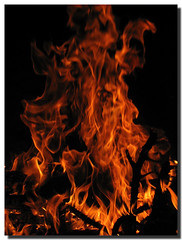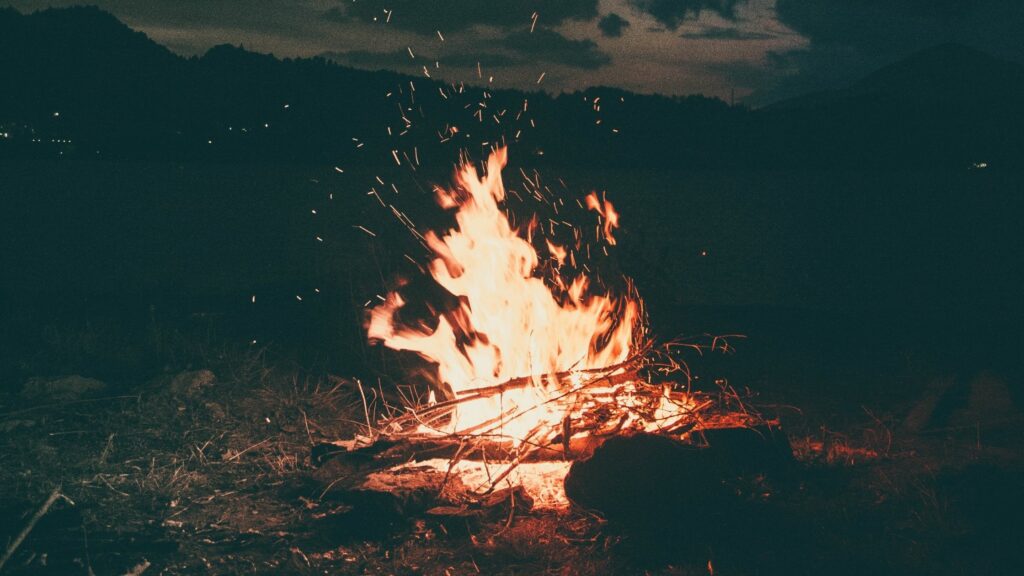
- Rehearse on the Saturday before Palm Sunday (not on Holy Saturday)
- Catechumens and candidates are not at rehearsal; their sponsors are and godparents are
- The pastor and the Vigil presider (if it is not the pastor) do not need to lead the rehearsal, but they need to be there
- Rehearse with the lectors—a lot
- Create a retreat day on Holy Saturday for the elect
- The elect do not choose a baptismal name and candidates do not choose a confirmation name
- Keep the focus of the Vigil on baptism
- Begin after complete darkness
- Build a bonfire for the new fire. Ask a boy scout. Better, ask a fire fighter (because they’re not afraid of big fires)
- Notify the neighbors ahead of time about the fire
- Buy a real candle for the Paschal Candle, not a white tube filled with oil
- Don’t give individual candles to the elect until after they are baptized
- Buy or rent a portable sound system for the blessing of the fire and candle
- Choose music the entire parish knows well and can sing in the dark
- The Gloria is sung by all; it is never spoken
- The Alleluia is sung by all; it is never spoken
- Make the Gospel procession the biggest of the year, processing throughout the assembly
- Proclaim more than the minimum required number of readings
- Proclaim the Romans reading from memory, looking directly at the elect
- Baptize by full immersion
- Chant the blessing over the water
- Pour more water into the font as the blessing is chanted
- Invite the children present to come close enough to the font to see well
- Chant the names of the elect instead of speaking them when you call them forward
- Include the names of the elect in the Litany of Saints
- The Litany of Saints is only sung if there are candidates for baptism
- If you baptize someone, confirm them, including children
- 28. Deacons may only baptize infants; adults and older children must be baptized by the priest or bishop who will also confirm them
- Use a handful of Chrism for each confirmation; rub it in, don’t wipe it off
- Plan the ritual so the communion of the newly baptized is the climax of the liturgy
- Just before saying, “This is the Lamb of God,” call the newly baptized forward, by name, and speak a short, poetic reminder “of the preeminence of the Eucharist, which is the climax of their initiation and the center of the whole Christian life” (RCIA 243).
- Plan a reception for the newly initiated following the liturgy
Your turn
What are the best practices you’ve learned in your parish? Share your thoughts in the comments below.









Can you say more about why we should not give individual candles to the newly Baptized at the easter Vigil? thanks Cindy
Hi Cindy. That could probably go either way. The rite doesn’t say anything one way or the other. But I like the symbolism of the elect waiting until after their baptism to receive the light from the Christ candle.
Nick
We always have the elect wait to receive the Light of Christ until called for during the explanatory rites following their baptism. To make the symbolism all the more powerful, their initiation candles are small versions of our full Paschal candle with the same decorative banding. It then becomes a really powerful gesture when those baptized last year bring their initiation candle back to be relit from this year’s Paschal candle.
Great idea Andrew!
Get big fluffy white robes for the newly baptized to wrap themselves in as they wait and watch others of their “class” get be baptized.
Can you give me an example of wording used to call the elect forward to be Baptized? We will call them forward with their godparents, then they will process back to the baptismal font.
Hi Maureen. Try this:
PRESIDER:
Quienes son los candidatos para el sacramento de Bautismo?
Who are the candidates for Baptism?
Cantor: [cantor chants the names of candidates]
[The elect and their sponsors stand. After all the names are called, the cross bearer leads the candidates through the assembly. The Litany of Saints continues as they process.]
[Elect and their sponsors move to the the font.]
The podcast on best practices was really enjoyable and thought-provoking. Every RCIA team should listen to these with their liturgist present, too! Regarding #8 “Begin after complete darkness.”
Here is a “best practice,” from my former parish in Michigan (Christ the Redeemer, Lake Orion). The Vigil started at 6:00 A.M. Now, in Michigan that means it was COLD and DARK. But, sure enough, the sun was dawning right at time of baptism. Literally, the rays of sunlight poured through the windows as the neophytes came up out of the water. The light physically shattered the darkness.